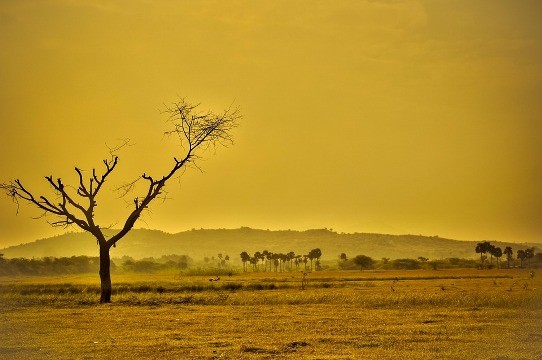Uneven temperature patterns recorded in different states this year are bringing heat waves back into the news. India’s temperature has increased substantially due to global warming. The harm caused by this phenomenon has only been discussed in theory. However, recently it’s damage is being seen on ground. In March 2017, Maharashtra saw three deaths due to heat strokes. A few other states that recorded higher temperature than usual, became a cause of worry when it turned into a killing force.
A heat wave is defined as a period of unusually high temperatures, exceeding normal highest temperature of a particular area. The Indian Meteorological Department has criteria laid down to declare heat waves in any region.
Due to climate change, the frequency of heat waves has increased in the 21st century, more so in the South Asian countries. India has been very vulnerable in this respect, with Indo-Gangetic plains being largely afflicted. States mainly affected during the heat wave season are Andhra Pradesh, Telangana, Odisha, Gujarat, Rajasthan, Madhya Pradesh, Uttar Pradesh, Vidarbha region of Maharashtra, Bihar, Jharkhand and Delhi.
A study published in Science Advances Journal in June 2017 discussed the health impacts of heat waves and their growth in the past few decades. It claims that heat stress during periods of high temperatures may also exacerbate health problems, such as cardiovascular and respiratory diseases, and cause life-threatening crises. India is a country where a big portion of the population doesn’t have basic health and social amenities like water, shelter, access to air conditioning and medical assistance. Hence, it is a bigger problem for us. Exposure to high temperatures could lead to dehydration, heat cramps, the rapid rise of body temperatures and nausea.
In May 2015, Indian Express reported death toll in Andhra Pradesh up to 600 and Telangana up to 215. In four years, heatwaves have claimed over 4000 lives.
Weather reports done in the previous years claim that mean temperature across India between 1971 and 2007 have increased more than 0.5 degrees. Southern and western parts of the country experienced 50% more heat wave since 1985, than decades before.
The government adopted the Heat Action Plan when deaths due to heat strokes were at an all-time high, and it proved to be a path breaker. The main pointers in a plan like this are recognising the heat wave as a health risk and reaching out to people. Information about it is dispensed through various means and public cooling shelters are made. This worked wonders in Ahemdabad and was adopted by other states last year. But now, the scale of this has drastically increased and stricter methods have to be put in place. Changes need to be made not just on the state level but globally. Global warming is a common concern that all countries share and needs every individual’s responsibility and attention.
Regards,
The CSR Journal Team

